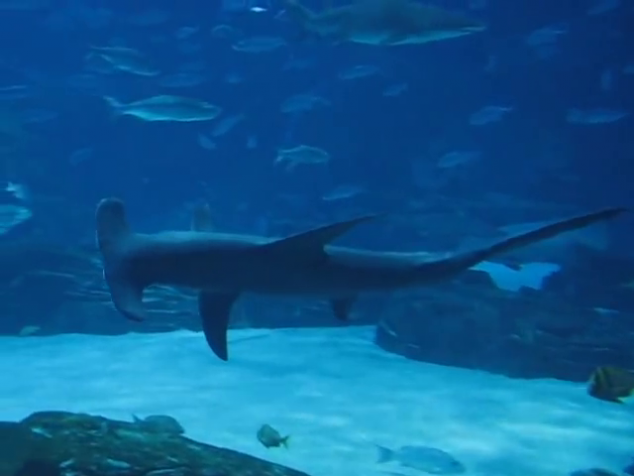Media Releases
Hammerhead sharks use 'side-stroke'

A new study by an international team of researchers has discovered that great hammerhead sharks spend a large amount of time swimming rolled onto their side, because it’s a more efficient way to travel than traditional upright swimming.
Co-author of the study, James Cook University’s Dr Adam Barnett, said researchers deployed accelerometers and video cameras on two wild hammerhead sharks off Australia and Belize and obtained information from three additional cameras deployments in the Bahamas.
All five Sphyrna mokarran sharks spent a large amount of time (up to 90%) swimming rolled onto their side at angles of between 50 and 70 degrees.
The team conducted hydrodynamic modelling with a physical model of a great hammerhead, and found that these sharks should suffer the least amount of drag (and therefore expend the least amount of energy) when they swim at roll angles of exactly 50-70 degrees, by using their large dorsal fin to generate lift.
Dr Barnett said it was a surprising discovery. “It just goes to show how much we don’t know about what goes on in the ocean,” he said. “At first we thought the shark must be sick, but it would switch from one side to the other and once we began looking we found other examples of this behaviour.”
Dr Barnett said the animals reduce the cost of transport by about ten per cent by using the side-swimming method.
Team leader Dr Nicholas Payne, from the Department of Life Sciences at the University of Roehampton in the UK said they were not expecting to see the strange behaviour. “It quickly became clear that side-swimming is a reasonably common behaviour in this species; great hammerheads in public aquaria even do it. It is a fascinating solution to minimising travel costs,” he said.
Great hammerhead sharks are solitary, and currently classified as endangered by the IUCN red list. “Unfortunately, hammerhead sharks are disappearing from our oceans at an alarming rate, so observing them in the wild is increasingly difficult. Our finding highlights how much we still have to learn about our oceans’ predators,” Dr Payne said.
The study was published in the journal Nature Communications.
Publication – open access here:
http://www.nature.com/ncomms/2016/160726/ncomms12289/full/ncomms12289.html
Pics and video; http://bit.ly/2arWYyR
(For single-use only with this media release. Not for archiving or re-use. Please credit if marked).
Dr Adam Barnett
E: adam.barnett@jcu.edu.au